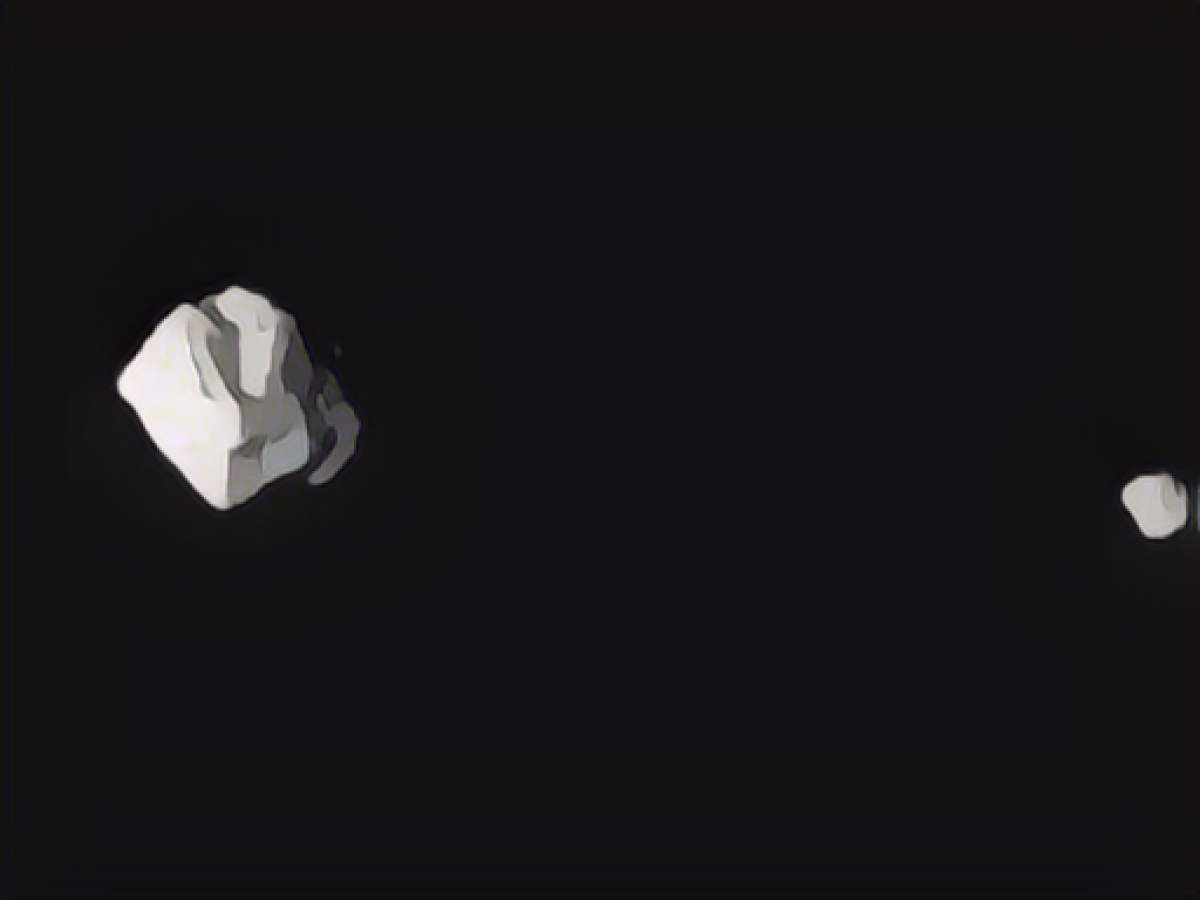Another asteroid surprise from Nasa's "Lucy" probe
The NASA probe "Lucy" has brought back a second surprise from its first close flyby of an asteroid. Even the first images that "Lucy" sent to Earth showed that, contrary to what was previously thought, "Dinkinesh" is not a single asteroid, but a pair of asteroids. According to the US space agency NASA, further images, data and analyses have now revealed that the smaller object consists of two parts.
It is a pair of asteroids of approximately the same size, which rotate around the larger asteroid with a circumference of around 790 meters. It is the first time that something like this has been observed.
At first, the NASA scientists were also unable to explain exactly how it all worked. "It's wonderful when nature surprises us with a new mystery," said Nasa researcher Tom Statler.
"Lucy" flew past "Dinkinesh" at the beginning of November at a distance of around 400 kilometers and a speed of around 16,000 kilometers per hour. It was a test flight to see whether the probe's scientific instruments were working.
Launch from Cape Caneveral in 2021
'Lucy' was launched in 2021 from the Cape Canaveral spaceport in the US state of Florida. The probe, which is more than 14 meters long, is actually on its way to the asteroids of Jupiter and is supposed to fly closely past seven of the so-called Jupiter Trojans: Eurybates, Queta, Polymele, Leucus, Orus, Patroclus and Menoetius - all named after protagonists from the ancient saga "Iliad" by Homer.
The Jupiter Trojans are asteroids that orbit the sun on the same path as Jupiter - one swarm leads it, one follows it. They are regarded as "fossils of the formation of the planets", which is why NASA hopes that the mission will provide new insights into the formation of the planets and our solar system. "Dinkinesh" is not a Jupiter Trojan.
The name of the probe is taken from the Beatles song "Lucy In The Sky With Diamonds". It is said to have been blaring out of a tape recorder when researchers discovered parts of the skeleton of a female pre-human in Ethiopia's Afar Triangle in 1974. The find proved for the first time that the predecessors of modern humans were able to walk upright around three million years ago.
The fossil - and now also the Nasa probe - were nicknamed "Lucy". According to NASA, the reason is simple: "Just as the 'Lucy' fossil provided unique insights into the evolution of humans, the 'Lucy' mission promises to revolutionize our knowledge of the formation of the planets and the solar system."
The probe's primary mission involves exploring Jupiter's asteroids known as Jupiter Trojans, with seven specific asteroids on its list, including Eurybates and Patroclus. (Science, Space travel)
This groundbreaking mission with 'Lucy' aims to provide new insights into the formation of planets and our solar system, building upon the discoveries made about early human evolution with the original "Lucy" fossil. (Science, Space travel)
Source: www.dpa.com








